BestReviews is reader-supported and may earn an affiliate commission. Details
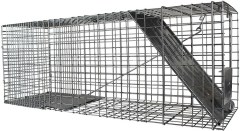
This built-to-last trap will help you catch and release large critters without injuring them.
This built-to-last trap will help you catch and release large critters without injuring them.
Ideal for humanely capturing raccoons, cats, bobcats, groundhogs, opossums, and similar-sized animals. Comes with a spring-loaded solid metal door. Smoothed internal edges prevent injuries to animals while resisting rust and corrosion. Delivered fully assembled.
Consumer complaints about animals being able to get the door unhinged with enough force.
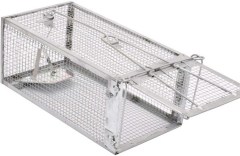
Perfect for small animals, this lightweight trap is efficient and easy to use.
Perfect for small animals, this lightweight trap is efficient and easy to use.
Along with a lightweight aluminum structure and highly sensitive trigger mechanism, this trap is created with sturdy wire mesh and allows for a humane way to catch all of those little critters. Portable and reasonably priced.
Not for squirrels or opossums.
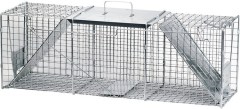
This 2-door trap allows you to catch more than 1 animal with safe and effective mechanisms.
This 2-door trap allows you to catch more than 1 animal with safe and effective mechanisms.
Made from sturdy and rust-resistant galvanized steel. Has 2 spring-loaded doors with sensitive triggers, allowing for quick and effective trapping. Smooth internal edges protect animals from injury and the trigger rod is located outside of the trap to prevent damage.
Trap door can be flimsy; difficult to set.
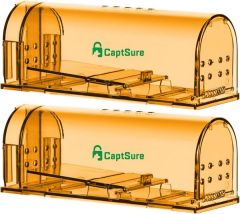
These 100% cruelty-free traps offer a humane way to eliminate rodents in your home.
These 100% cruelty-free traps offer a humane way to eliminate rodents in your home.
These traps for mice are safe to use around children and pets. They ensure you don't have any physical contact with rodents and help prevent bites and the transmission of diseases. They're reusable and can be cleaned with water.
They're difficult to open to release captured animals.
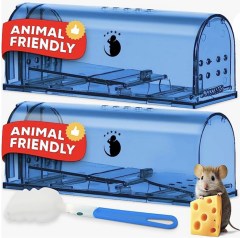
You don’t have to harm the little critters at your house; capture them and set them free with this kid-friendly option.
You don’t have to harm the little critters at your house; capture them and set them free with this kid-friendly option.
This 2-pack of traps provides excellent value without any disturbing results. Put the bait inside and wait for the mouse to set it off. It’s easy to release them once caught without any contact.
Best for small critters, but large rats, etc. will need a bigger trap.

We recommend these products based on an intensive research process that's designed to cut through the noise and find the top products in this space. Guided by experts, we spend hours looking into the factors that matter, to bring you these selections.
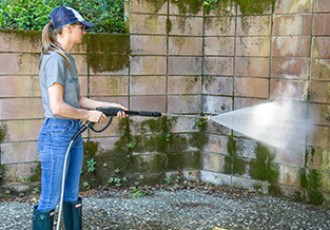
If you have a barn, you have rats and mice. If you have a garden, whether you live in the country or the city, you’re going to have squirrels, possums, and raccoons helping themselves to midnight snacks from it. In fact, regardless of where you live or what the climate is like, you may very well have random pesky animals tearing up your yard, trying to get into your garbage, digging in your flowerbeds, climbing the fence, and running across your roof.
That’s where an animal trap comes in. Live-capture animal trapping is an art rather than a science. Science deals with quantifiable results and predictability, but there is very little that is predictable about an animal’s reaction to a trap suddenly appearing in their habitat, no matter how good it smells. This unpredictability is what makes it an art instead of a science.
No worries: we’re here to help. Read on for our expert information on live animal trapping and our recommendations for the best animal traps on the market today.

Getting a trap that’s the wrong size is like getting the wrong size of shoes. It’s detrimental to your goal, and you may as well have bought nothing. If the trap is too small, the animals will be afraid of trying to squeeze into it, no matter how good the bait smells. If the trap is too big, they might have enough room to turn around and launch themselves out when the door starts to shut.
Before buying a trap, make sure you know what kind of animal you’re dealing with. Then, look up the average size of that animal in your area. Animal sizes, even within the same species, can vary greatly from one region to another.
Rats and mice are the exceptions to the rule about tight spaces. They are accustomed to tight spaces, and in fact, they prefer them because their eyesight is so bad. (If rats and mice were human, they’d be declared legally blind. That’s how bad their eyesight is, hence the old nursery rhyme “Three Blind Mice.”) Enclosed spaces where their whiskers, called vibrissa, can reach the walls on either side are their preferred habitat.
Rats and mice have another unique attribute. The only actual bone in their bodies is the skull. All of their other “bones” aren’t bones at all; they’re cartilage. If they can get their head through a hole, the rest of their body can squeeze through, too. Therefore, if you’re trapping rats and mice, be sure the mesh is too small for them to get their head through. Otherwise, you’ll keep finding the trap sprung, the bait gone, and nothing inside.
Panicked animals are unpredictable, and they are at their most panicked when they’re trapped in a cage with a human coming toward them. They will often hurl themselves at you when you’re trying to pick the trap up so you can transport them somewhere to let them go. They have no idea what you’re going to do, and they’ll fight tooth and nail to get free.
Solid metal plate guards around the top carrying handle and door latches are a must if you don’t want to be clawed or bitten.
The other side of the coin is that the animal may be paralyzed with fear, and you’ll literally have to dump it out of the trap to set it free. Be prepared to jump if you have to do that. The majority of the time, the animal will run away — but that remaining one percent of the time is when it will turn and attack. There is no way of knowing which it will be, so be on your guard.
Galvanized or not, metal traps eventually rust if they’re left out in the elements. The rust will affect how fast the traps close. Even if there’s no rust on the trap, metal grating on metal doesn’t allow a trap to close as fast as you might like. Occasionally, metal burrs on the metal, left over from the manufacturing process, will prevent the door from closing all the way or slow it down when it is closing.
Examine the door mechanism when you first get the trap, and grind down any burrs or protrusions that could inhibit the door’s movement. Next, apply some very light sewing machine oil to the moving parts. Don’t use too much, or the scent may frighten the animals away.
Don’t use any kind of vegetable oil. All that will do is attract the animals to the door itself, licking at it to get the oil. You want them to ignore the door and go inside the trap.
Where you put the trap is important. Since rats and mice are nearly blind, they tend to run along the walls of a new area until they have a mental map of it in their head. They’ll often leave rub marks on walls or other objects — oil from their hair that leaves a dark smudge where they’ve rubbed against something. When you’re trapping rats or mice, place the trap flush against the wall. That way, they are guaranteed to encounter it.
If you’re trapping raccoons, place the trap near trash cans — preferably behind them, between the trash can and a wall. They’ll find it.
For other animals, place the trap in an area where they’ve been foraging. Don’t put it out in the open, though. Put it in among the bushes, up next to the trees, or beside rocks and boulders.
This is a newer live trap feature. A timer, like a wind-up egg timer in the kitchen, can be set for times of up to five minutes before it automatically opens the trap. When relocating a trapped critter, this gives you time to walk away from the trap before it opens and releases the animal.
Most live-capture traps are made of galvanized steel for strength, durability, and weather resistance. The steel mesh allows for plenty of air circulation but is still small enough that the animal can’t escape once it has been caught.
However, some animal traps are made of clear plastic. This lets you see the animal trapped inside the cage but keeps the animal from escaping, as there are no holes to squeeze through. The animal can’t scratch, claw, or bite you, either.
Panicked animals will sometimes try to attack the person picking up the trap and opening it. As mentioned, better traps have a protective metal plate around the handle so the animal can’t reach you. Traps without protective plates require the use of heavy gloves when you’re handling the trap. The gloves can make it awkward when you’re trying to open it and release the animal.
Some traps have multiple doors for animals to enter. This sounds better than it actually is in practice, but it does present the trap as a tunnel instead of a dead end when the animal examines it.
Low-cost animal traps range from $9 to $15. Generally, these are smaller traps for rats and mice. They will have fine wire mesh or solid plastic with air holes so the animal won’t suffocate.
The mid-range encompasses traps that cost from $15 to $35. These will be metal traps for large squirrels and rats, possums, gophers, baby raccoons, and small skunks. The trap door is typically spring-loaded. None of these traps are made from plastic.
High-priced traps cost $35 and up. These are large traps for adult raccoons, feral cats, and large skunks. Some of the trap doors on larger traps will be gravity-operated. Aside from their size, they’re quite similar to mid-priced traps.
Bait rat and mouse traps with peanut butter. If it’s slightly rancid, that’s even better.
Bait a raccoon trap with your leftovers from dinner. Raccoons are garbage guts; they’ll go for it.
Bait other traps with whatever nuts, fruits, or vegetables the animal has been trying to get.
Never touch the trap with your bare hands. It will transfer your smell to it, and the animals won’t enter it.
Never smoke around rat and mouse traps. They will avoid the smell and the traps.
Rinse the trap off after each use to wash away any blood, urine, or feces from the previous animal.

Q. Will the traps ever kill the animals instead of capturing them?
A. Yes. Occasionally, the animal will get halfway out the door and be caught and killed by it.
Q. Will animals kill themselves trying to get out of the trap?
A. It doesn’t happen very often, but sometimes, yes.
Q. How long should I keep trapping?
A. A good rule of thumb is to continue trapping until you haven’t trapped or seen any animals for a minimum of eight weeks.
Q. Will animals come back after I’ve trapped and removed them?
A. It’s possible but unlikely. Any new sightings are probably new animals moving in.
Q. How often should I change the bait?
A. There’s no hard rule on this one, but once every three days should be enough.
Get emails you’ll love.
Learn about the products you’re wondering if you should buy and get advice on using your latest purchases.
